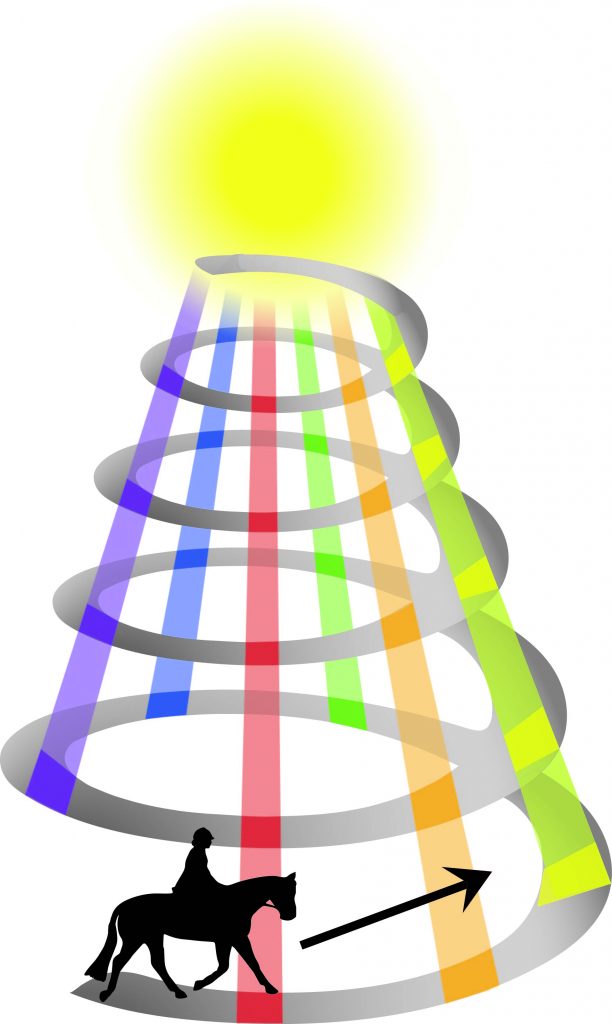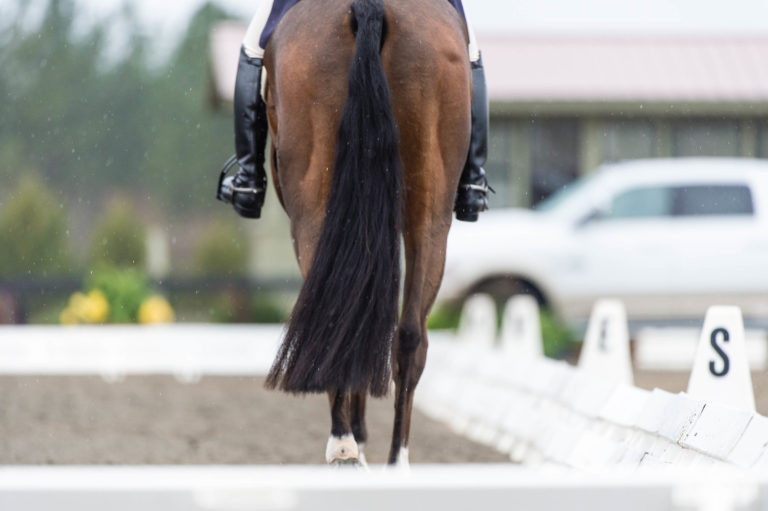At the very frontier of scientific thought, new ideas are emerging that challenge everything we believe about how our world works and our relationship with ourselves and other living beings. For decades, respected scientists in a variety of disciplines all over the world have been carrying out well-designed experiments whose results fly in the face of current biology and physics. Together, these studies offer information about the central organizing force governing our bodies and the rest of the cosmos.
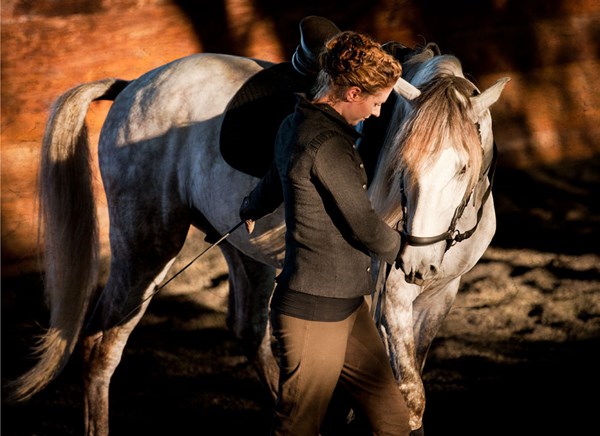
What they have discovered is nothing less than astonishing. At our most elemental, we are not a chemical reaction, but an energetic charge. Human beings and all other living things are linked and connected in a pulsating field of energy, which is the central engine in the relationship between the mind and the world with which it must interact.
Our relationships with animals and the molecular processes that happen from them to us, and from us to them, enrich all the other relationships we have. These processes—which we are often not conscious of—are actually intermolecular exchanges of energy. These intermolecular energy exchanges create change, a transmutation—the action of changing or the state of being changed into another form. In other words, it is this energy exchange that allows for molecular change.
The molecular process that would allow for oneness with another being necessitates having an openness of mind and a childlike imagination willing to accept the invitation to explore the endless possibilities that can exist between a human and an animal. This is also an invitation to entertain the idea that there is a different way of training, a different way of being with the horse. The result is nothing short of an alchemical process that creates change on a molecular level. We have to be conscious of the fact that how we think impacts how we interact with the horse, how we communicate with him.
Who We Are, Not What We Do
The more self-disciplined we are, the more conscious we are of our body because our mind is more available and compassionate, and the better prepared we are to be received by the horse. The more we are aware of who we are, the better the chances that any situation can be dealt with. If we are calm and centered, the horse will likely pass through resistance or disturbance much more easily. He will happily partner with us. The horse is ready for us. His state is pure. We have to preserve that purity of feeling by being as clean as we can for him. Let me explain what I mean by “clean.”
When you first connect with a horse, something happens. In the initial contact, there is a lot of communication: the exchange of energy. When entering the stable or going to the paddock, your first visual contact with the horse is the beginning of your relationship with him. Make sure you are prepared, meaning you have left the frustration and complications of your daily life behind you. Bring who you really are, clear and open. Welcome him; breathe and smile.
This first connection starts the relationship; after that, you can decide what shape the relationship will take: Will it simply be a physical one, or will it be more sophisticated? Slow down your breath, your vibration; breathe out and be mindful of your movement around your horse. Then be the best you can: Your tact, your sensibility, your love will be ready to produce magic. This is the start of making your intermolecular energy exchange, and thereby molecular change, a conscious one.
A New Paradigm
I want to introduce a new paradigm that elevates the existing hierarchical outline of lightness presented within the horse industry until now. When I use the term “lightness,” I mean being with the horse as he is truly collected, on the bit with maximum impulsion and a slack rein, with brilliance, beauty and life.
This new paradigm will serve as the lay of the land and a template for much of what is discussed in this book. It includes the molecular parallels to my existing mantra of riding art, creating a new Molecular Mantra: direction, rhythm, bend and lightness. The new parallels are concentration, energy, physicality and openness/release.
These parallels serve as the building blocks that comprise the bubble of molecular lightness. Their sequential order results in the openness and release that characterizes lightness, oneness and enlightenment.
Direction involves being able to concentrate on one thing. That may be focusing on where you are going with the horse. It can be directing your attention to an object or to a thought. Direction requires self-discipline and it is the first thing that you must achieve in riding.
The next is rhythm. When you find and keep a distinct rhythm, you find and keep the same balance, the same energy that the rhythm dictates. For example, when you are dancing with a partner to salsa music, you get a great feeling of happiness and carry yourselves in a balance and with an energy that relates to that happiness. With a slow dance or music in a minor key, you will feel blue and perhaps sadness, and the energy you emanate will reflect that.
Bend is the physical position that ensures the horse’s well-being and allows mental communication between rider and horse once the horse is on the bit. Mental communication is facilitated when there is no resistance, no force, no blocking, no aggression. The horse is relaxed and open to mirror the relaxed and open rider.
Lightness is condicio sine qua non (without it, there is nothing). It is the result of the horse being on the bit and the classical French riding goal descente de main et descente de jambe—the relaxing of the rider’s hands and legs (a cessation of action…release). In addition, the key to understanding lightness is through recognition of the superior matter, the greater power that we are part of and that is inherent in us. This is the power we need to have when riding. The popular mantra used in some meditative practice in the journey to self-realization is Om Namah Shivaya—meaning, you are open to and acknowledge (and indeed bow to) your true inner self, which is the form of God in you.
This is our connection to something bigger than who we are, and it is what facilitates the creation of “oneness” with the horse. It is what creates the very thing that is so extraordinary about molecular change. It is through the circle created by the molecular mantra of direction, rhythm, bend and lightness, and its parallel elements concentration, energy, physicality and openness/release that we arrive at a molecular process—an intermolecular exchange of energy that leads to molecular change in human and horse. All these elements, in their order, need to be honored for union to occur.
Small, Simple Tasks
The molecular process starts when we are present (being right here, right now, focused on this very moment) and when we have defined goals. We are mentally and physically available. In that regard, communication begins as a state of mind and body. If, instead, we are scattered and without focus, we risk losing the very essence of what we are looking for.
It is important that one learns how to be and not just how to do. We need to begin riding with a very simple task, one that is meant to initiate the relationship with the horse. It could be as simple as establishing a walk as we focus on knowing where we are going (direction) or find a particular rhythm.
We should not necessarily be focused on passage or piaffe, even when riding those movements is one of our goals. This is very tricky because we learn throughout our life that when we want to produce something, we have to do something.
The sequence of first focusing on pursuing small, simple tasks with our horse may seem, on the surface, as if nothing is happening. However, in the end, when all the basic building elements come together, we have something incredible.
I learned this from my grandfather. He was a locksmith by profession and knew everything about locks—he could pick every one. Consequently, his mind worked backward. When beginning a new project, he would not work on the project itself but on preparing for it: He would gather the necessary tools, the needed materials and organize the different parts. He carefully measured and weighed everything. To us children, it seemed that for days he was doing nothing, which drove us crazy. However, when my grandfather did, in fact, start working on the project itself, the job was done quickly because of all the preparations made beforehand. This was a great lesson for me.
When you approach a new lesson with your horse, do your thinking first. Use the power of your mind in the form of visualization (create a clear picture in your head of each interaction with your horse); work on your ability to be present; gather the basic building blocks of communication, that we just discussed. That way, when you are with your horse and beginning the communion that is riding, then everything is ready for your horse to meet you in the place where molecular change can occur.
There are many things you can do without your horse to prepare to be with him and prepare for the feeling you will experience when both of you come together. For example, you can sit in a quiet place and play a movie of your ride in your head. Do this with your eyes closed. This enables you to create a situation where you mentally ride your horse. Your movie can be as complete as you wish. It is a visual image of your state of being, your horse’s, and the feeling that is the result of both of you together. For you, this movie is like being a pilot in a flight simulator.
Misconceptions Become Barriers
Molecular change will occur when we want it to, when we have a clear intention. For most people, this may seem too simple a formula because it involves debunking previous notions of what training should be. But because of the way I teach during my clinics, which are time-intensive, I am unable to be conventional. Years of working in this way have made me refine my ability to establish a quick rapport with a horse, assess his needs and consider the next step in his training.
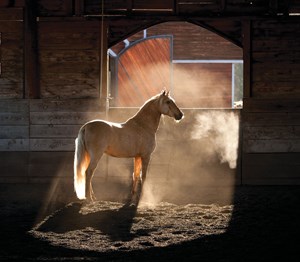
My work differs from regular training offered by others because the emphasis is not on the systematic training of the horse, and this might be a point of criticism by some. Because my time is limited, my priority becomes the quality of the relationship formed with the horse, and that facilitates his ability to learn. We can accelerate his learning—and even help make things happen—when we use our mind. It is because I am forced to adhere to a schedule that I rely on creating change in myself and the horse through mental clarity. This kind of approach is quite different from what is currently out there; it is a result of the way I choose to be as a teacher, as a clinician.
Lessons from Mestre Nuno Oliveira
Very early one morning when I was in Portugal visiting the old picadero (riding school), Mestre Oliveira arrived riding an extremely large gray horse that was owned by a banker. He was a strange-looking horse: His back was slanted—I think he had once injured his haunches. Catching sight of me, Mestre asked me to ride the horse.
Wearing plain shoes and pants, I was not dressed properly, but still, I climbed into the saddle. The ring was very small, about 13.5 meters wide, maybe 27 meters long; just enough room for a circle at each end.
Mestre asked me to canter on a circle. He requested descente de mains, descente de jambes (let go with the hands and the legs). Then he said, “Reins on the buckle.” So I dropped the reins, and the horse stayed in the same position. Then he asked me to lengthen the stride down the long side, and in about five or six strides, I was at the other end. The gray was strong, and as I circled to the right, he was in a big canter. Mestre asked me to collect the horse. Of course, I went to grab the reins, but he said, “Oh no….” And that was about the extent of it.
Then I stretched upward and pulled my shoulders back, and the whole horse came back in a collected canter—without any rein. This became one of the most important experiences of my life. I decided that this was what I wanted to learn and what I wanted to teach.
Lightness, The Ultimate Connection
Lightness, true collection on the part of the horse with maximum impulsion and a slack rein, allows the horse to be himself. Rein contact and strong leg contact, in many ways, interfere with the physical movement of the horse, and totally destroy and alienate the horse’s mind. Only when he is comfortable in the correct position and light, do we have a chance to experience a superior understanding of the relationship between the two.

The horse is already light by nature. He experiences lightness under saddle only when he is ridden properly. In other words, it depends on how competent, tactful and refined we are in order for him to just be himself. When he is himself, he is light. When a horse has been pulled on for many years, a tactful rider is suddenly a new feeling. He must form a new understanding of being ridden that he no longer has to answer to all the pushing of the rider’s seat and legs and pulling of the hands. The horse has to learn that this is not part of the equation anymore, and sometimes this realization takes a certain amount of time. Once the horse does understand that the rider does not intend to interfere with his body or his mind, then it is only a matter of how clear the rider can continue to be…and molecular change will be able to happen at the discretion of the horse.
Lightness Is a Rider’s Perception
Lightness comes as a result of the rider’s body and mind. First, the rider has to get out of the way of what is (remember, the horse is already light). When the rider can do this and can put the horse in a correct position while maintaining enough energy to help the horse stay there, it is then that the dance will happen. The quality of the dance is dependent on the quality of the dancer, especially of he who leads.
A monk once said that inviting God in is not enough. You have to get out first—there is only space for one. Getting out is the challenge.
Teachers as Facilitators of Molecular Change
While our horses are our best teachers, we cannot discount the importance of the simple human-to-human student-teacher relationship. There is much to be said about this as it allows for learning to go both ways. I think that a teacher can learn a lot from his student and vice-versa. The real master is the person who is able to show us the light, to direct us into a way that will allow us to understand what is happening as he does.
There is a great responsibility on a teacher to direct his student in a certain way—a way that awakens. When he imparts knowledge in an overwhelming way too quickly, for example, instead of liberating the student, he blocks understanding. Therefore, the timing of teaching is very fundamental. When it is done well, the student will blossom. If knowledge is given too soon, the teacher could end up blocking his student’s path to understanding with too much information before the student is ready to receive it.
The responsibility of the teacher is to feed the student what is needed at the time that it is needed—a principle of importance to the masters of the past. In this way, learning is not just a present-day interaction between student and teacher, but an important part of a long tradition of riders who have worked with a master in a certain way. I think that when people are really dedicated to such a tradition, it gives them a strong feeling of continuity; a strength of belonging.
Learning Is Remembering
There is a Native American adage that says, “We do not learn, we remember,” meaning that at some point, we already knew all there is—our body, our mind, our soul already knows the subtleties of life and of riding. The only thing that we do is remember them through day-to-day experience.
We must think of being with our horse not as a matter of learning how to commune with him but as a matter of remembering what our higher self already knows. Remembering more and more each time we ride becomes yet another opportunity for refinement.
Old Perceptions Create Room For New Ones
To welcome in the new—new ideas, new potential—we need to consider the possibility that a different path to being with and riding a horse exists. Without judgment, with humility and compassion, we open ourselves to this possibility. We need to create change in ourselves in order to learn to look at things differently—let go of old perceptions and outdated knowledge. We need to be able to recognize that even very little change in the way we look at things can make a big difference.
What follows are just some examples of misconceptions about horses that we hold as being true. These are the very things that prevent us from creating a different reality with our horse—that of a vision nested in openness, a communion. 1. The horse is, for the most part, on the forehand. 2. A young horse cannot be light. 3. The horse’s conformation is a barrier to lightness. 4. Lightness is achieved as an end goal of training. 5. Lightness (in the horse) comes from a lot of hard work (on the part of the rider), namely pulling and pushing.
Any changes in our understanding or consciousness are a result of self-discipline and practice.
Understanding lightness and how it is attained is no different. We must practice being with our horse as we might practice meditation: every day in the same position, mind and spirit.
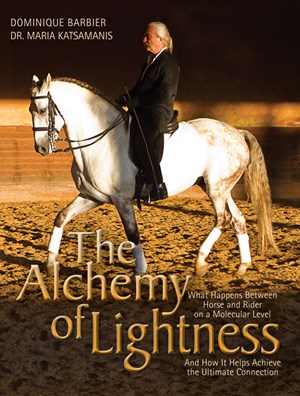
In the new book, The Alchemy of Lightness, authors Dominique Barbier—a certified British Horse Society assistant instructor and author of Dressage for the New Age and Meditation for Two—and Dr. Maria Katsamanis—a licensed clinical psychologist and dressage trainer—introduce what they call “the world of molecular equitation, otherwise known as the scientific study of the interplay of mechanisms when humans and horses meet, communicate and interact.” By encouraging the equestrian to let the horse be the teacher at times, this book hopes to explain how a rider can change consciousness in order to affect riding habits and build on togetherness with an equine partner. In the following excerpt, adapted from their book, Barbier discusses the science behind the art of equitation and what happens between a horse and human on a molecular level. Used with permission from Trafalgar Square Books.

Dominique Barbier is a certified British Horse Society assistant instructor and has trained at a number of highly regarded facilities throughout Europe, including an internship with Mestre Nuno Oliveira. He is the author of Dressage for the New Age and Meditation for Two. He has been teaching his art of dressage training philosophy across the world for the last 40 years. He lives in Healdsburg, California.
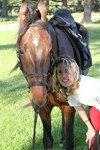
Maria Katsamanis is a licensed clinical psychologist and is the co-founder of an equine-based psychotherapy and learning program. She lives in Lambertville, New Jersey.





